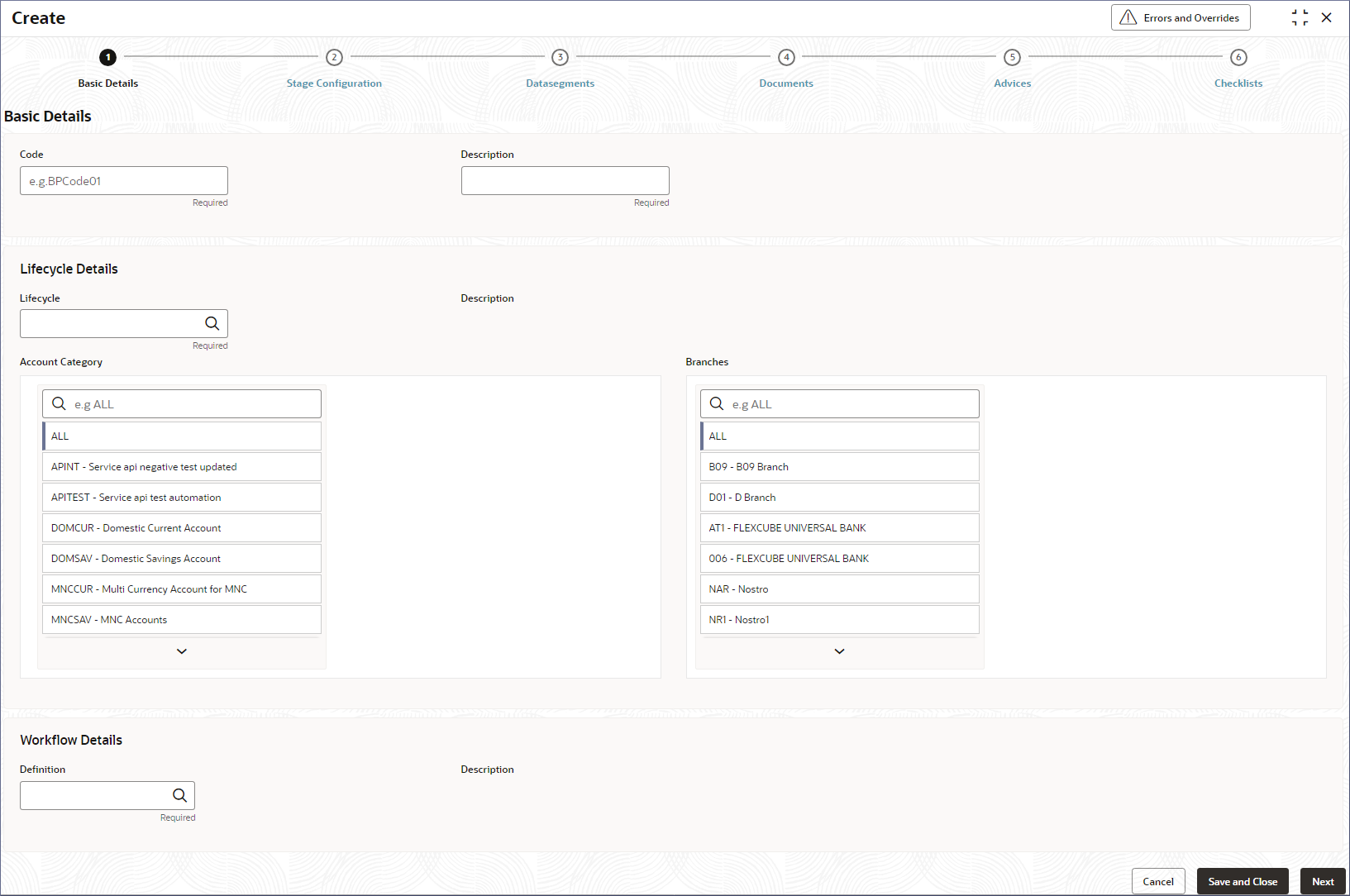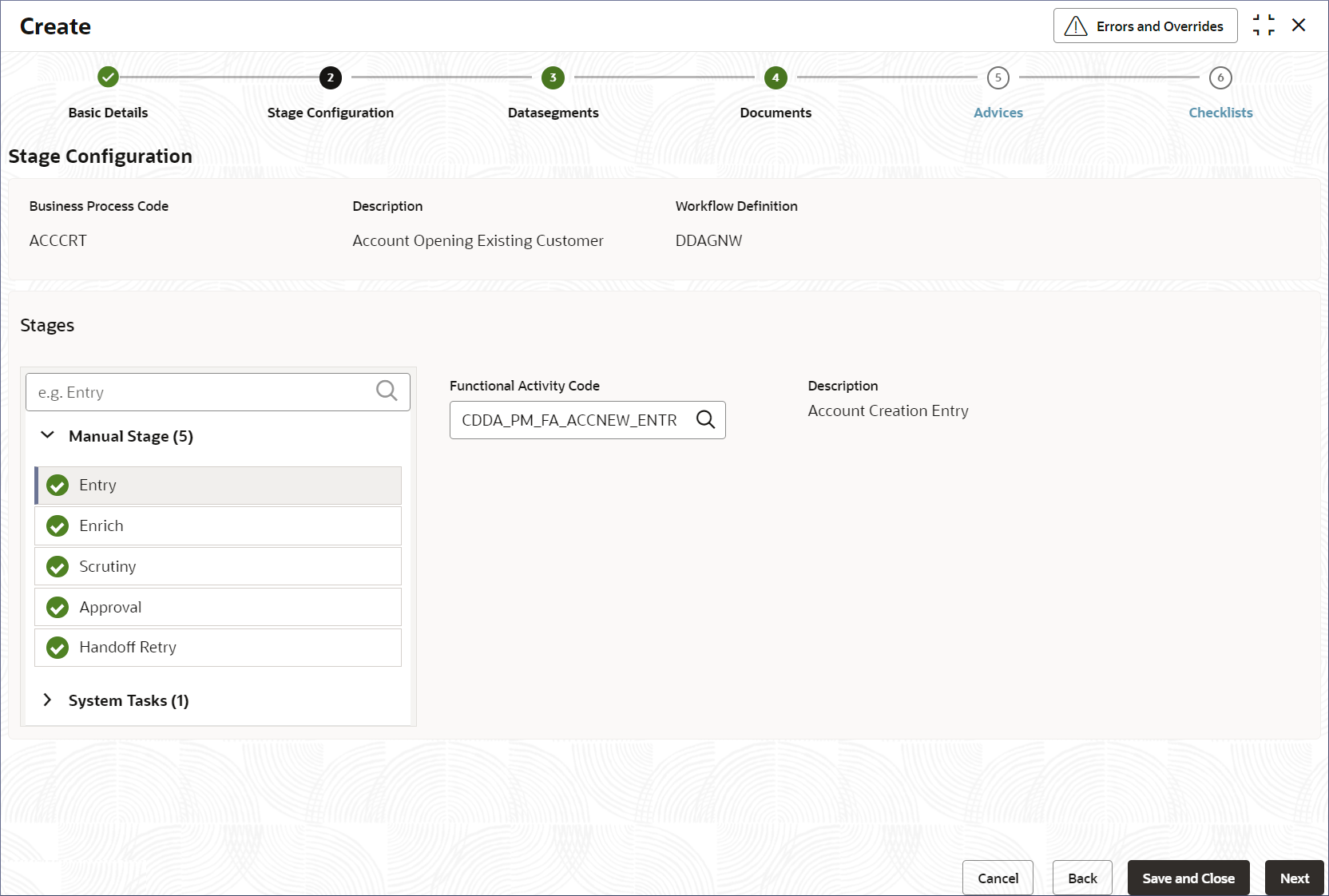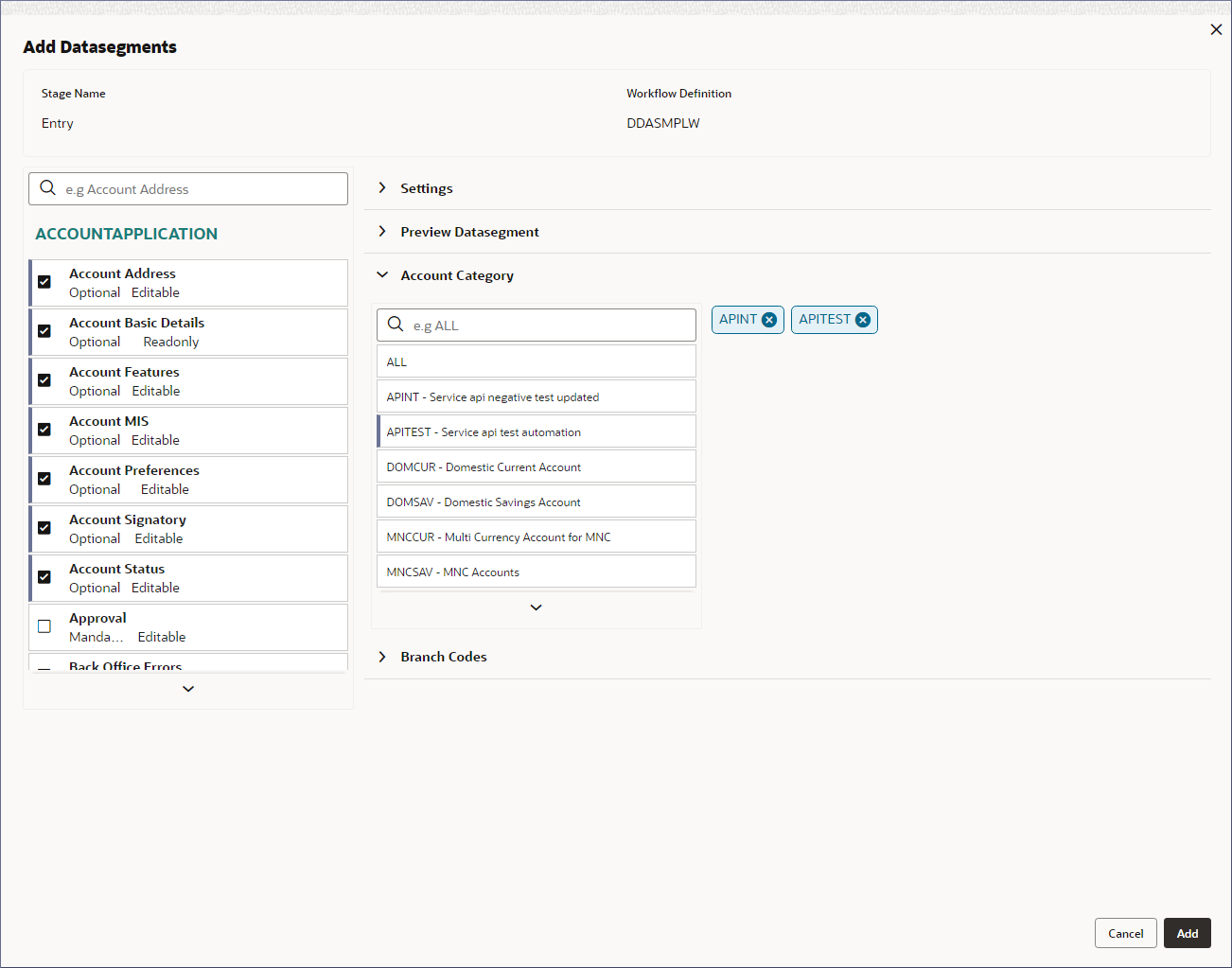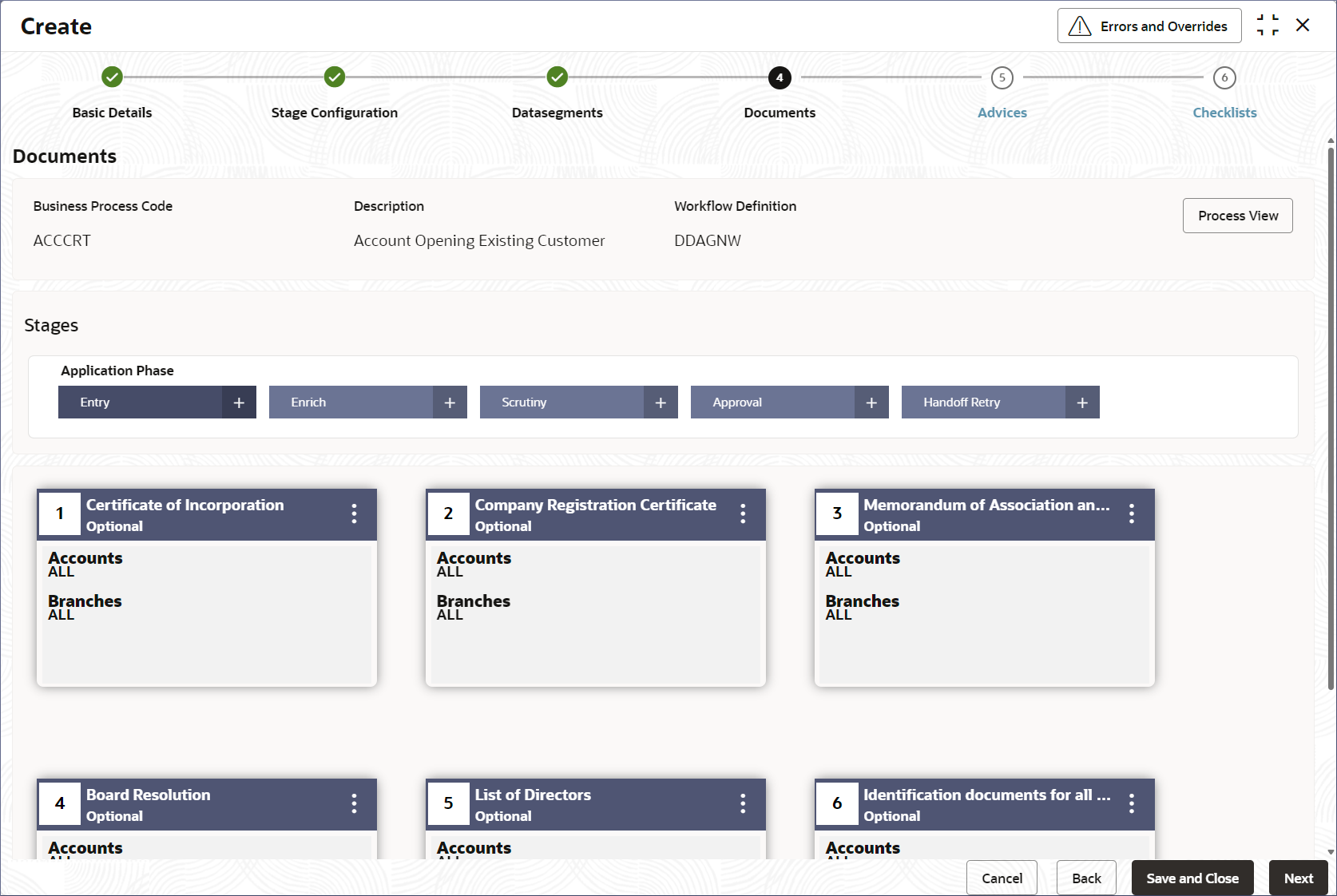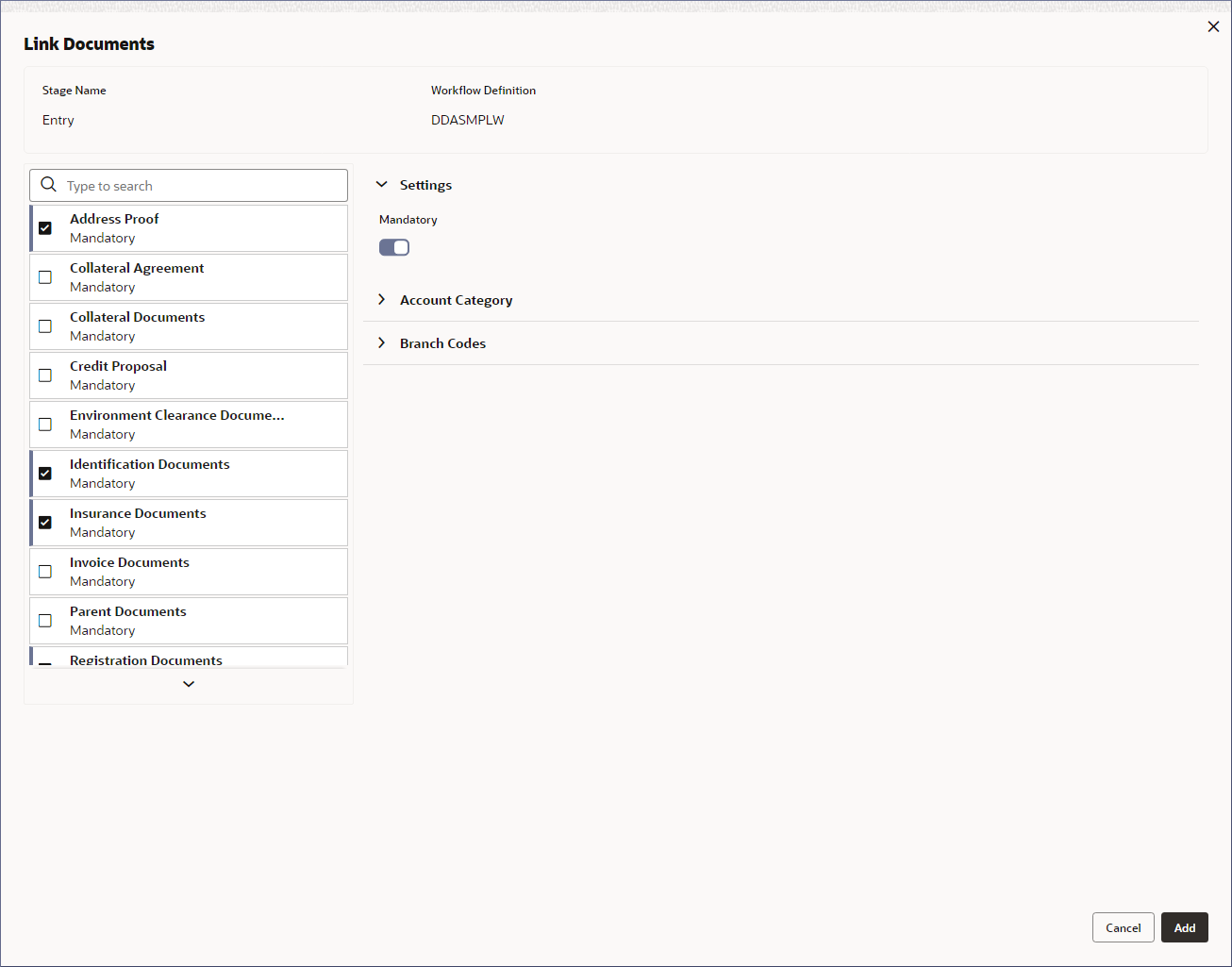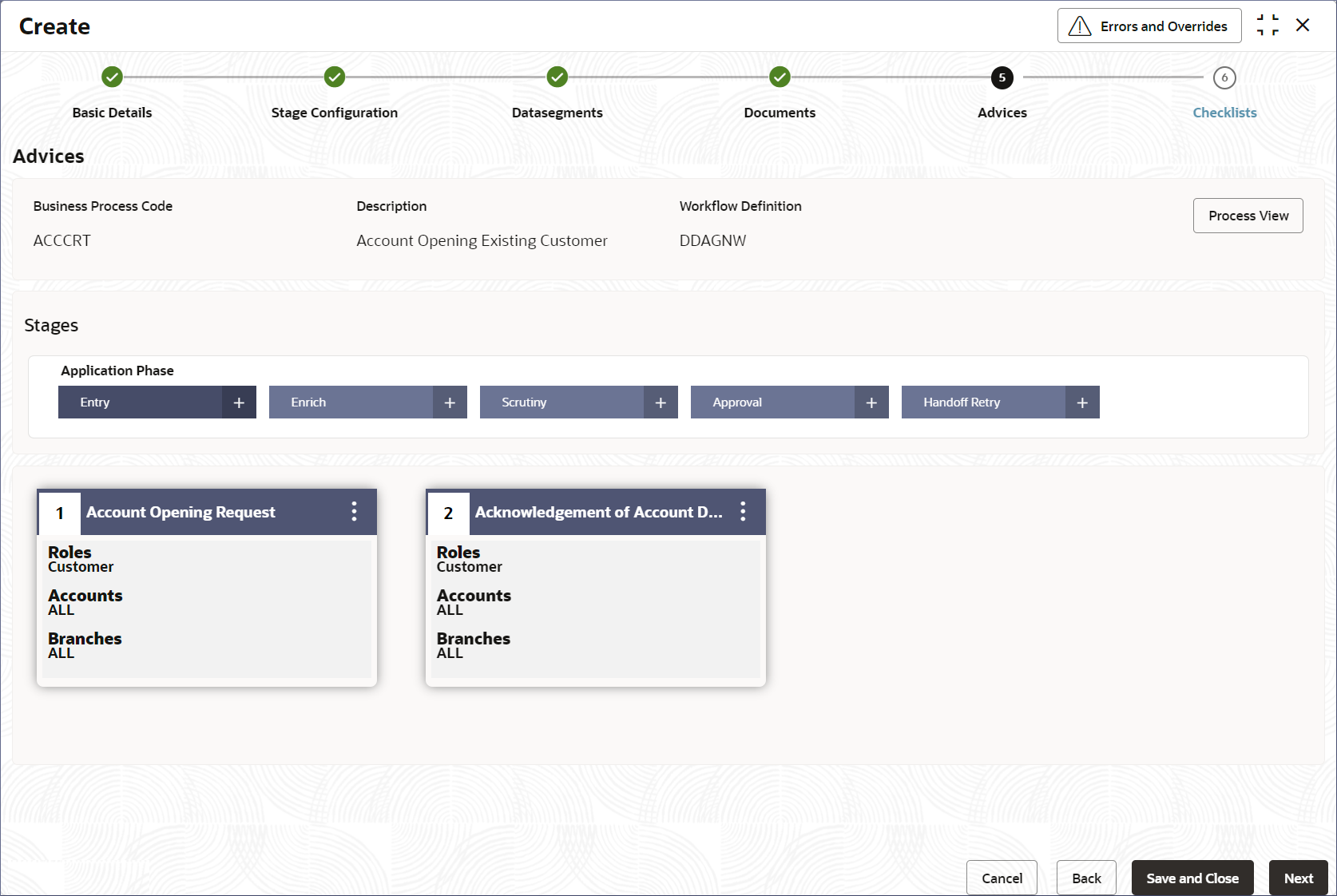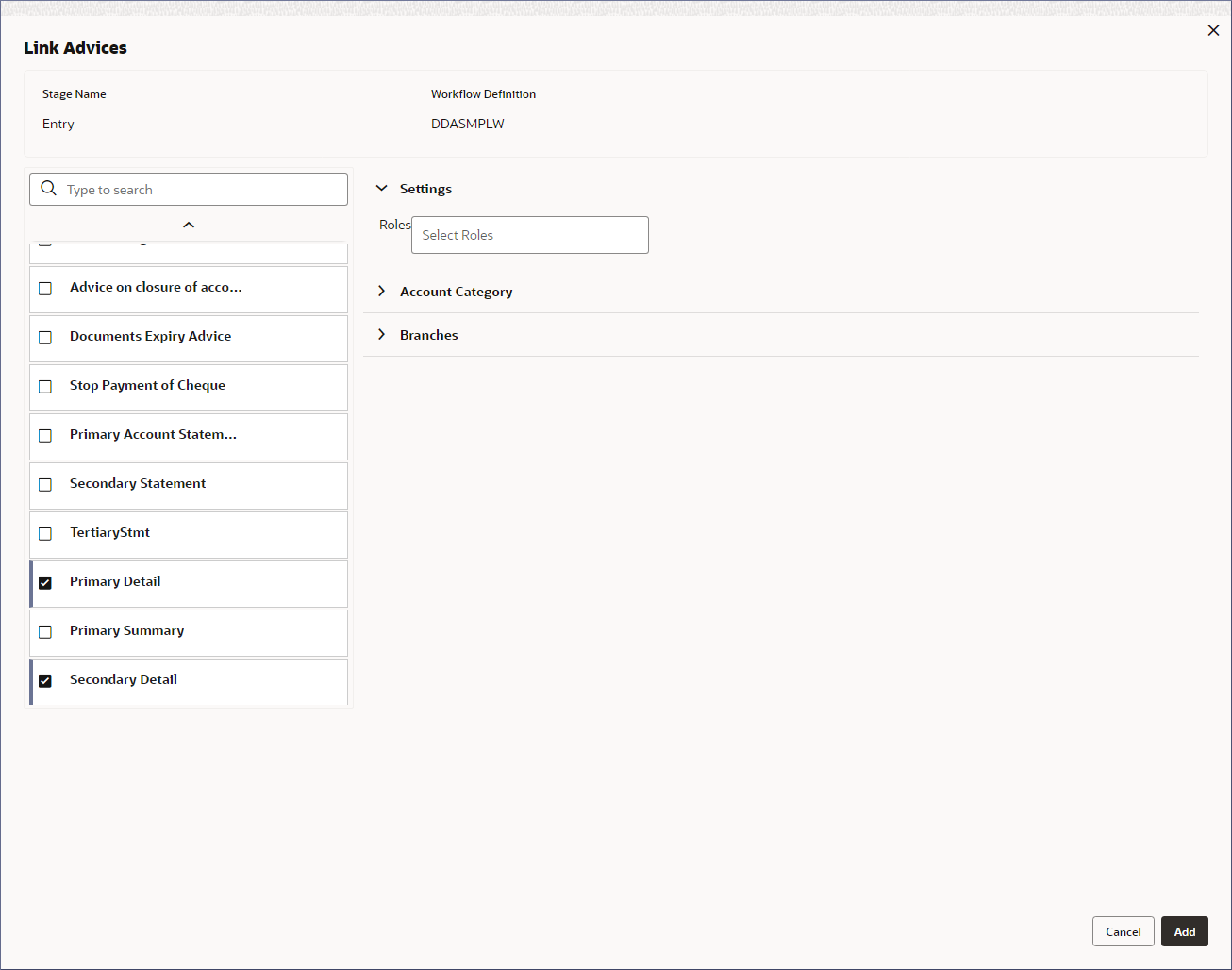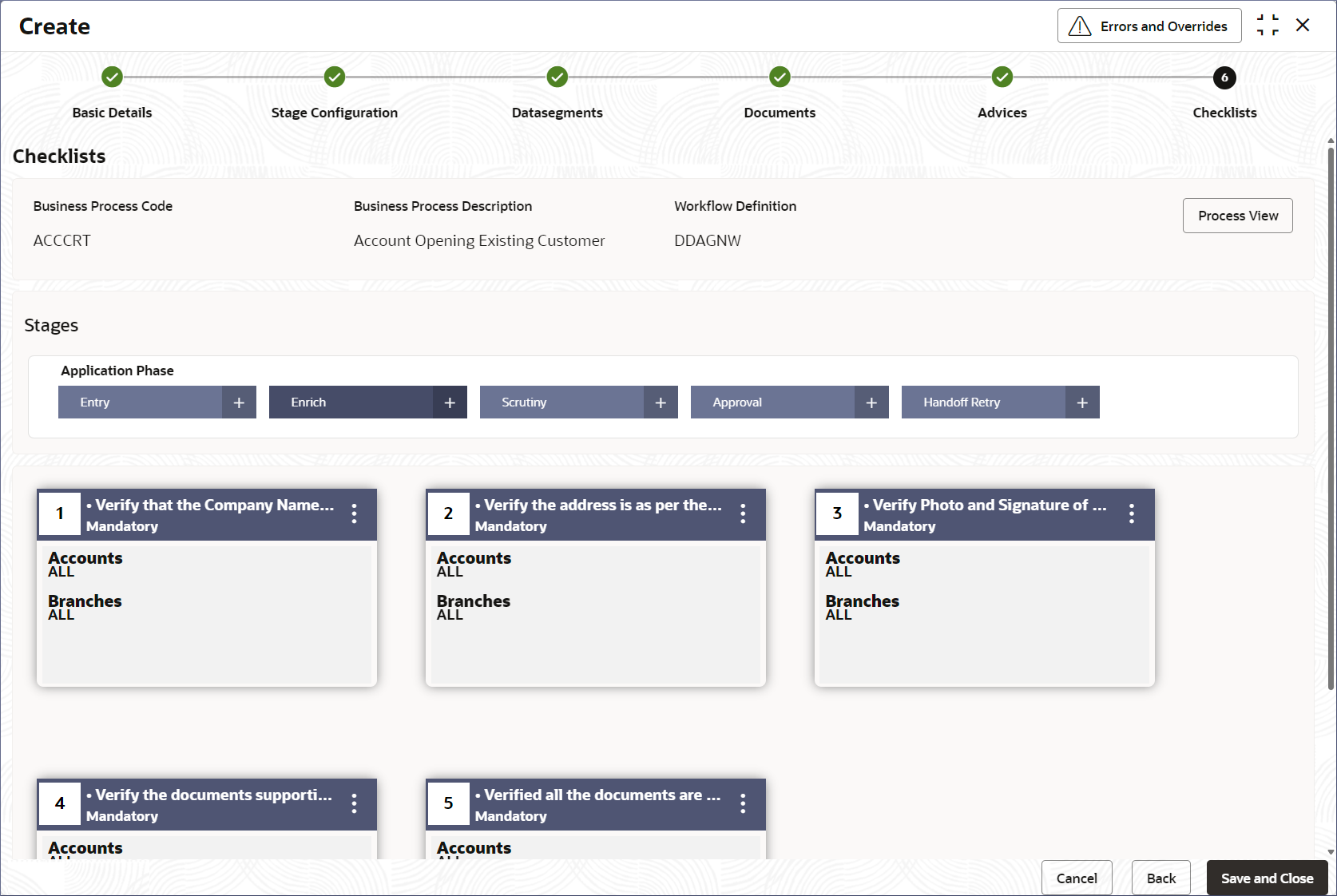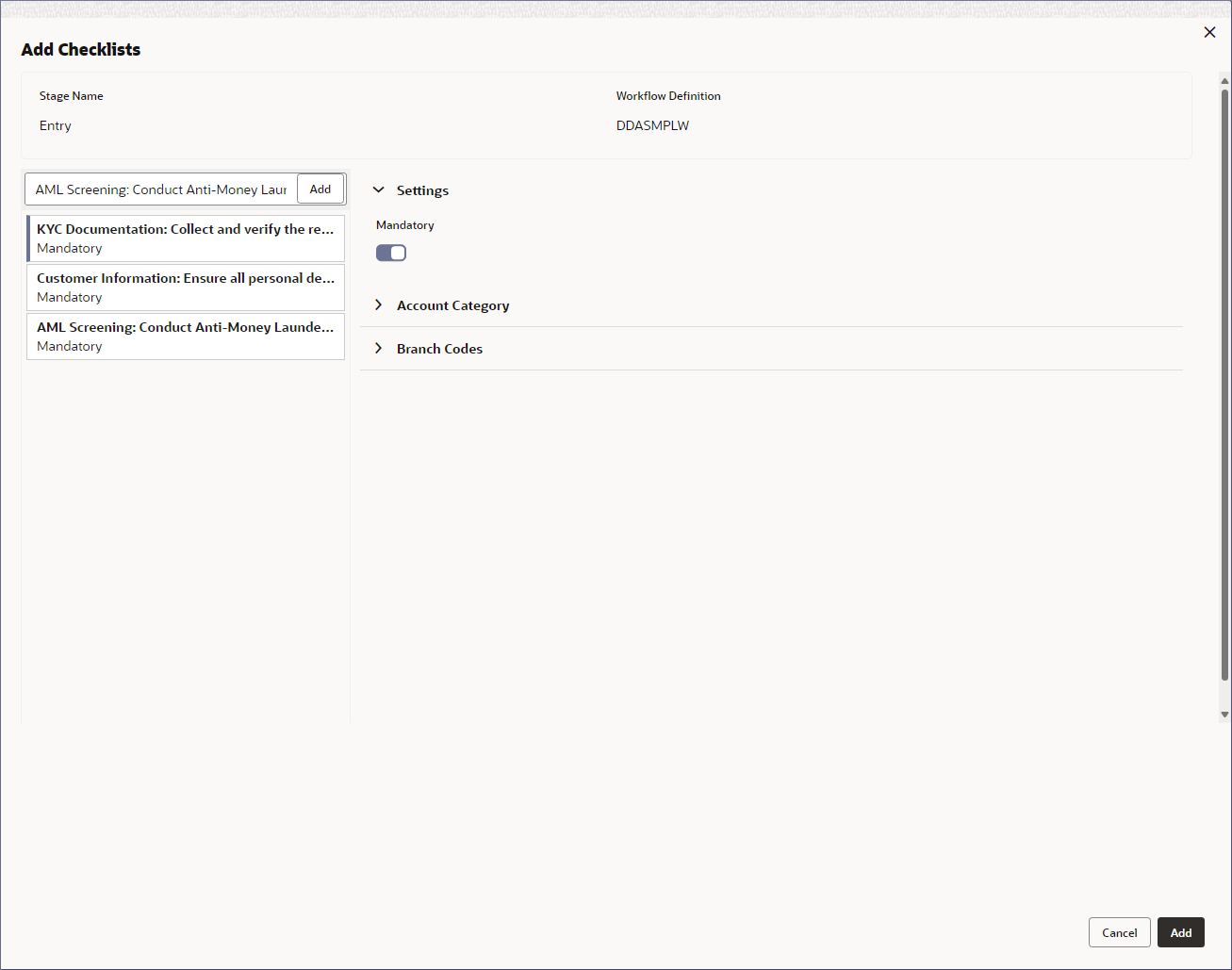- Account Configurations User Guide
- Corporate / Nostro Business Process
- Create Business Process
4.1 Create Business Process
This topic describes the systematic instructions to create a business process.
- Click Account Configurations. Under Account Configurations, click Corporate / Nostro Business Process.
- Under Corporate / Nostro Business Process, click
Create.The Create page displays the Basic Details screen.
Figure 4-1 Create Business Process - Basic Details
- Specify the fields on the Basic Details screen.
Table 4-1 Basic Details - Field Description
Field Description Code Specify a unique code for the business process. The code can contain up to seven characters. You can use capital letters, small letters, and numbers from zero to nine to form the code. Note:
The code cannot be changed once the business process is created.Description Provide additional details about the business process. You can use up to 35 alphanumeric characters. Lifecycle Select the required lifecycle for which this business process is defined. For example, the business process could be for the account amendment lifecycle. Description Displays the description of the selected Lifecycle. This field is auto-populated. Account Category Select the required account categories from the list of values. The business process applies to all the accounts in the account categories. For more information on account category, see Corporate / Nostro Account Category. Branches Select the required branch codes from the list of values. The business process applies to the selected branches. Definition (Work flow Details) Click the search icon in the field to open the Definition window. Select from the list and click to add the definition. Description(Work flow Details) Specify the description of the selected definition. This field is auto-populated. - Click Next.The Stage Configuration screen displays.
- Specify the fields on the Stage Configuration
screen.
Table 4-2 Stage Configuration - Field Description
Field Description Business Process Code This field is auto-populated with the Business Process Code specified in the Basic Details screen. Description This field is auto-populated with the description of the Business Process Code specified in the Basic Details screen. Workflow Definition This field is auto-populated with the workflow definition specified in the Basic Details screen. Stages The list of stages defined for the process code display. There are two types of stages the first are manual stages. These stages of the business process flow are completed manually and orchestrated by the conductor flow. The other type is a system task that is called internally by the system. The list of stages in the Manual Stage and tasks in the System Task depend on the Lifecycle selected in the Basic Details screen. This configuration allows you to configure the below elements for each stage of the work flow:
- Data Segments
- Documents
- Advices
- Checklists
Manual Stage Configure the manual stages. Select each stage and specify the Functional Activity Code for that stage. System Tasks Configure the system tasks. Click and specify the Functional Activity Code for that task.. Description Displays a description of the Functional Activity Code. This field is auto-populated. - Click Next.The Datasegments screen displays.A data segment is an individual block of data. Use data segments to break down huge processes into smaller units, which are easier to update, maintain and process. A Business Process consists of several such data segments that makes up a stage. Business Process Definition allows the user to perform the following:
- Add a number of data segments to each stage.
- Set the data segment as mandatory or not mandatory.
- Set the data segment as editable or not editable.
- Control the sequence order of the data segments.
- Select the stage.
- Specify and configure the data segments required at each stage on the
Datasegments screen.
Table 4-3 Data segments - Field Description
Field Description Business Process Code This field is auto-populated with the Business Process Code specified in the Basic Details screen. Description This field is auto-populated with the description of the Business Process Code specified in the Basic Details screen. Workflow Definition This field is auto-populated with the workflow definition specified in the Basic Details screen. Application Phase Specify and configure each stage in this section. Specify the data segments that apply to each stage. Configure the Settings, Account Category, and Branch Codes for each stage. For example, click + on the Entry stage and select the data segments that apply to the entry stage. The list of data segments are:
- Account Address
- Account Basic Details
- Account Features
- Account MIS
- Account Preferences
- Account Signatory
- Account Status
- Approval
- Back Office Errors
- Cheque Book
- GL Reporting Details
- Interest Details
- Legal Block
- Limits
- Multi-currency Account
- New Customer Onboarding
- Statement Preferences
- Stop Payments
- Transaction Journal Entry
- Click + on a stage listed in the
Application Phase.The Add Datasegments dialog displays.
- Click and select all the data segments required at this stage from the list of data segments.
- Click to select a required data segment.The corresponding property nodes display to the right.
- Expand the nodes on the right side and specify the details described in
the following table.
Table 4-4 Data Segment Configuration
Node Name Description Settings Enable or disable the following options: - Mandatory - Disable this option if the data segment is not mandatory. By default this option is enabled.
- Editable - Disable this option if the data segment is not editable. By default this option is enabled.
Preview Datasegment Expand this node to preview the data segment as it will be visible in the business process. Account Category Select the required account categories to which the data segment applies from the list of account categories. Branch Code Select the required branch codes to which the data segment applies from the list of branch codes. - Repeat steps c and d for all the required data segments.
- Repeat all of the above steps for each stage in the process.
- Click Next.The Documents screen displays.
- Link and configure the required documents for each stage on the
Documents screen.
Table 4-5 Documents - Field Description
Field Description Business Process Code This field is auto-populated with the Business Process Code specified in the Basic Details screen. Description This field is auto-populated with the description of the Business Process Code specified in the Basic Details screen. Workflow Definition This field is auto-populated with the workflow definition specified in the Basic Details screen. Application Phase Specify and configure the documents required at each stage in this section. - Click + on a stage listed in the
Application Phase.The Link Documents dialog displays.
- Click the documents required at this stage from the documents list.
- Select a required document.The corresponding property nodes display to the right.
- Expand the property nodes on the right side and specify the details
described in the following table.
Table 4-6 Data Segment Configuration
Node Name Description Settings Enable or disable the following options: - Mandatory - Disable this option if the document is not mandatory. By default this option is enabled.
Account Category Select the account categories which require the linked document from the list of values. Branch Code Select the branch codes which require the linked document from the list of values. - Repeat steps c and d for all the required documents.
- Repeat all of the above steps for each stage in the process.
- Click + on a stage listed in the
Application Phase.
- Click Next.The Advices screen displays.
- Link and configure the required advices at each stage in the
Advices screen.
Note:
Advices are official letter of notices detailing an action taken or to be taken on a stated date by the bank.Table 4-7 Advices - Field Description
Field Description Business Process Code This field is auto-populated with the Business Process Code specified in the Basic Details screen. Description This field is auto-populated with the description of the Business Process Code specified in the Basic Details screen. Workflow Definition This field is auto-populated with the workflow definition specified in the Basic Details screen. Application Phase Link and configure the advices required at each stage in this section. - Click + on a stage listed in the
Application Phase.The Link Advices dialog displays.
- Click the documents required at this stage from the documents list.
- Select a required document.The corresponding property nodes display to the right.
- Expand the property nodes on the right side and specify the details
described in the following table.
Table 4-8 Data Segment Configuration
Node Name Description Settings Specify the roles that can provide the linked advice: - Roles - Click the text field and select a role from the pop up list of values, Repeat to select all the required roles.
Account Category Select the account categories which require the linked document from the list of values. Branch Code Select the account categories which require the linked document from the list of values. - Repeat steps c and d for all the required documents.
- Repeat all of the above steps for each stage in the process.
- Click + on a stage listed in the
Application Phase.
- Click Next.The Checklists screen displays.
- Add and configure the checklist items that apply at each stage in the
Checklists screen.Checklists are distinct and they list mandatory checkpoints by the bank for its customers.
Table 4-9 Checklists - Field Description
Field Description Business Process Code This field is auto-populated from the Basic Details screen. Description This field is auto-populated from the Basic Details screen. Workflow Definition This field is auto-populated from the Basic Details screen. Application Phase Specify and configure each stage in this section. - Click + on a stage listed in the
Application Phase.The Add Checklists dialog displays.
- Enter a checklist item in the text field.
- Click Add.The checklist item displays in the list below.
- Expand the property nodes on the right side and specify the details
described in the following table.
Table 4-10 Data Segment Configuration
Node Name Description Settings Enable or disable the following options: - Mandatory - Disable this option if the checklist item is not mandatory. By default this option is enabled.
Account Category Select the account categories which require the checklist from the list of account categories. Branch Code Select the branch codes which require the checklist from the list of branch codes. - Repeat steps c and d for all the required documents.
- Repeat all of the above steps for each stage in the process.
- Click + on a stage listed in the
Application Phase.
- Click Process View to view the Business Process flowchart.
- Click Save & Close to complete steps or click
Cancel to exit without saving.The Business Process is created.
Note:
At this point, the status of the Business Process is Unauthorized. A user with a supervisor role has to approve the Business Process. After approval, the status changes to Authorized, and the Business Process is available for use by another process. - Approve the Business Process.To know more about approving the Business Process, see View Business Process.
Note:
As a maker of this configuration, you cannot approve it. It has to be approved by another user.
Parent topic: Corporate / Nostro Business Process
